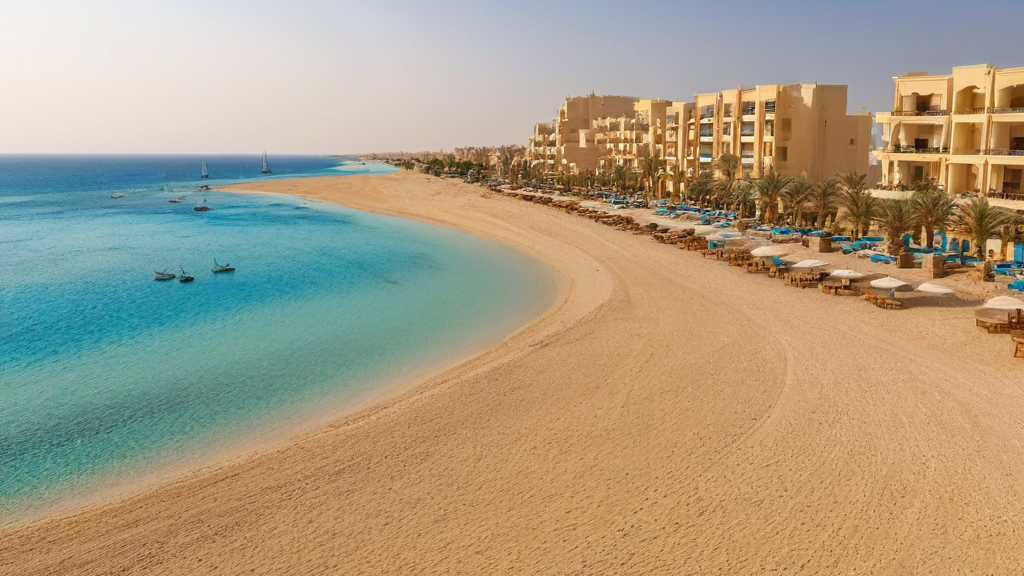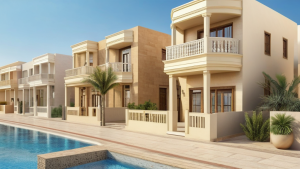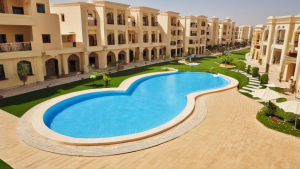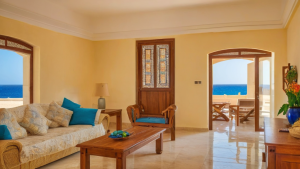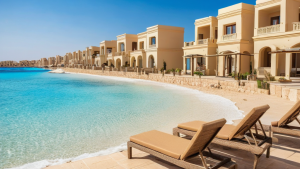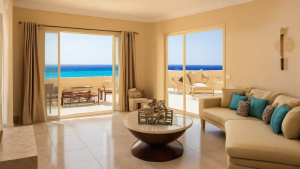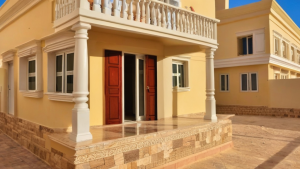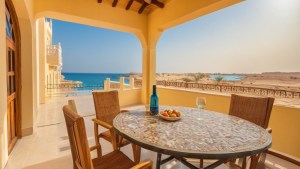Summary about owning and buying property in Hurghada, Egypt.
- Understanding the Average Rental Income Per Month for a Hurghada FlatExploring Factors Affecting Rental Income in Hurghada Flats.
- Renting out a flat in Hurghada can be a financially rewarding investment if you understand the local market dynamics.
- Knowing the average rental income per month for a Hurghada flat helps you set realistic expectations and optimize your returns.
- Flats in central Hurghada areas like Al Mamsha or Sakkala often achieve higher monthly rents due to their proximity to shopping, dining, and beach access.
- For instance, a two-bedroom flat in a prime location with sea view and pool access might comfortably earn around 8,000 to 11,000 EGP monthly on a long-term lease, or significantly more during peak tourist seasons with short-term bookings.
Understanding the average rental income per month for a Hurghada flat
Exploring factors affecting rental income in Hurghada flats
Renting out a flat in Hurghada can be a financially rewarding investment if you understand the local market dynamics. Knowing the average rental income per month for a Hurghada flat helps you set realistic expectations and optimize your returns. Several key factors influence rental income, including the flat’s size, location, amenities, and seasonal demand.
Hurghada, situated along Egypt’s Red Sea coast, attracts tourists and expatriates year-round. This constant flow of visitors creates a robust rental market, especially for short-term holiday rentals. However, rental prices also vary significantly between neighborhoods. Premium areas close to the beach or main tourist attractions generally command higher rents compared to flats located farther inland or in developing neighborhoods.
Average monthly rental rates based on flat size
Understanding the relationship between flat size and rental income is crucial. Generally, larger flats with more bedrooms fetch higher rental prices. On average, the rental income per month for different flat types in Hurghada falls into these ranges:
- Studio flats: Typically rent between 2,500 to 4,000 EGP per month, depending on the amenities and location. Studios are perfect for singles or couples looking for budget-friendly options, which keeps demand relatively steady.
- One-bedroom flats: Rent averages around 4,000 to 6,000 EGP monthly. These units appeal to small families, young professionals, and couples seeking more space but still wanting affordable options.
- Two-bedroom flats: These tend to rent for 6,000 to 9,000 EGP per month. The increased space suits families or groups of friends, making them popular for longer-term leases and holiday stays.
- Three-bedroom or larger flats: Larger apartments or penthouses can command between 9,000 to 15,000 EGP or more. High-end finishes, proximity to the beach, and luxury facilities raise rental prices substantially.
Impact of location on rental income
Location is among the most influential factors determining rental income. Flats in central Hurghada areas like Al Mamsha or Sakkala often achieve higher monthly rents due to their proximity to shopping, dining, and beach access. Coastal neighborhoods with sea views also see greater demand from both foreign renters and locals willing to pay a premium for scenery.
Conversely, flats positioned further inland or in upcoming residential zones might offer lower rents but attract tenants looking for more affordable options. These areas are ideal for investors who want consistent occupancy rates while catering to a budget-conscious clientele.
Seasonal variations and rental income consistency
The rental market in Hurghada has a distinct seasonality, largely driven by tourism peaks from October through April. During this period, short-term rental prices can surge, especially in prime locations, as demand from tourists seeking vacation accommodations rises.
If you plan to rent your flat seasonally, you could earn substantially more per month compared to long-term leases. However, the off-season months often yield lower occupancy and rental income. Balancing between short-term holiday lets and long-term rentals can be a strategy to stabilize income throughout the year.
Additional amenities that boost rental values
Modern amenities add value to Hurghada flats and can raise the monthly rental income. Features renters frequently look for include:
- Air conditioning and heating systems
- Secure parking spaces
- Swimming pool access
- Fitness centers or gyms within the building
- Reliable internet connectivity
- Balconies or terraces with sea views
Flats offering these conveniences attract a broader and more affluent tenant base, supporting higher monthly rents. Apartments within gated communities with comprehensive security and recreational facilities tend to generate steady interest and competitive rental pricing.
Estimating rental income for investment planning
For property owners and investors considering Hurghada real estate, estimating rental income accurately is essential for forecasting cash flow and return on investment. Given the factors outlined, here’s a simple formula to help:
- Determine the flat size and type.
- Research the average rental prices in the flat’s neighborhood.
- Adjust rent expectations based on available amenities and view.
- Consider seasonal adjustments if opting for short-term holiday rentals.
For instance, a two-bedroom flat in a prime location with sea view and pool access might comfortably earn around 8,000 to 11,000 EGP monthly on a long-term lease, or significantly more during peak tourist seasons with short-term bookings.
Navigating rental income trends in Hurghada
Monthly rental income in Hurghada has shown steady growth due to increasing tourism and urban development. New infrastructure projects and enhanced entertainment options further elevate the city’s appeal. By staying informed about market trends and tenant preferences, you can optimize your rental pricing strategy effectively.
Whether your goal is to maximize short-term holiday income or secure stable long-term rental revenue, understanding the average rental income per month for a Hurghada flat equips you with the insights necessary for sound decision-making. Tailoring your property offerings to meet demand while positioning competitively in the market will help you achieve the best possible rental returns.
Factors influencing rental prices in Hurghada’s real estate market
When exploring the rental market in Hurghada, several factors come into play that affect the monthly rental income you might expect from a flat. Understanding these elements can empower you to make informed decisions, whether you’re an investor looking to maximize your returns or a tenant searching for a fair deal. Hurghada’s real estate rental prices fluctuate based on multiple variables rooted in location, property features, and broader market trends.
Location and proximity to amenities
Location remains one of the most critical determinants of rental prices in Hurghada. Flats situated near popular beach resorts, marinas, or the city center often command higher rents. Proximity to amenities like supermarkets, schools, hospitals, and entertainment venues also impacts rental value significantly. For example, a flat within walking distance to El Dahar or Sahl Hasheesh typically sees stronger demand due to convenience for residents and tourists alike.
Moreover, properties close to Hurghada International Airport attract expatriates and tourists who value easy access to transport. Areas such as El Mamsha offer vibrant beachfront living, which naturally increases the monthly rental rates compared to more remote or less developed neighborhoods.
The size and condition of the flat
The size of a flat directly influences how much rent it can generate. Larger units with multiple bedrooms usually attract families or groups and thus can justify a higher upfront monthly fee. But that’s not the only aspect to consider,the overall condition and finishes of the flat contribute heavily to marketability and pricing.
Newly built or recently renovated apartments equipped with modern kitchens, air conditioning, and high-speed internet are more appealing to renters. In contrast, older flats requiring repairs or upgrades often come with reduced rental prices, reflecting their lesser attractiveness in the competitive market.
Seasonal demand and tourism cycles
Hurghada is a tourism-driven city, and this seasonality impacts rental prices. Typically, rental income spikes during high tourist seasons, such as winter months when tourists from colder countries flock to the Red Sea coast for warmer weather. It’s common for landlords to charge premium rates during these peak periods for short-term leases.
Conversely, during low seasons, the demand for flats can dip, reducing rental prices or leading owners to offer discounts to maintain occupancy. If you’re considering renting out a flat on a short-term basis, understanding these seasonal shifts in demand is crucial for optimizing monthly income.
Market trends and economic factors
Local and national economic conditions also influence rental prices in Hurghada’s real estate market. Fluctuations in currency, inflation rates, and economic policies can either boost or suppress demand for rental properties. For instance, an increase in foreign investment or improvements in local infrastructure tends to raise rental prices as the city becomes more desirable.
Additionally, government initiatives to promote tourism or real estate development often lead to expansion in housing supply, which can moderate rental growth if supply outpaces demand. Staying informed about market reports and economic forecasts helps both landlords and tenants anticipate shifts in rental pricing.
Amenities and building facilities
The availability of additional amenities often influences rental prices in Hurghada flats. Buildings offering security services, swimming pools, gyms, communal gardens, or private parking create more value and justify higher rent. Such perks enhance the tenant experience and attract long-term renters who prioritize convenience and lifestyle.
Properties that are part of gated resorts or complexes with maintenance services typically enjoy better rental yields due to the premium lifestyle they provide. When comparing similar flats, these extras often become the deciding factor for prospective tenants willing to pay more.
Rental terms and contract length
Another subtle but impactful factor is the rental agreement structure. Long-term leases tend to offer lower monthly rental prices in exchange for contract stability and reduced vacancy risk for landlords. On the other hand, short-term or vacation rentals in Hurghada can command higher monthly incomes but require more active management due to turnover.
If you’re aiming for consistent monthly rental income, focusing on securing tenants willing to commit to six months or more is advantageous. However, balancing this with flexibility during high-demand seasons may increase overall profitability.
Comparative pricing and market competition
The level of competition within the local Hurghada rental market affects pricing strategies. When numerous flats with similar features are available, landlords might lower rent to attract tenants quickly. Conversely, if demand is high and supply limited, rental prices generally rise.
Conducting a comparative market analysis can help property owners set competitive rental rates that optimize occupancy and income. For tenants, this knowledge provides leverage when negotiating lease terms or assessing value.
Many factors impact the rental income potential of flats in Hurghada. Location, size, seasonal demand, amenities, economic conditions, and rental terms all intertwine to create a dynamic market environment. By considering these elements carefully, you’ll be better positioned to understand and navigate the fluctuating rental prices in this vibrant Red Sea city.
Knowing the average rental income per month for a flat in Hurghada gives you a clear idea of what to expect when investing or renting out property in this vibrant city. Rental prices here are shaped by many key factors, including the flat’s location, size, proximity to the beach, and the quality of amenities available. Seasonal variations and the growing popularity of Hurghada as a tourist hotspot also play a significant role in rental income fluctuations.
By understanding these influences, you can make smarter decisions whether you are a landlord aiming to maximize your rental yield or a tenant looking for good value. Hurghada’s real estate market offers diverse options, but knowing the average rental income and what drives pricing helps you navigate the market with confidence. This insight allows you to balance affordability with quality and seize opportunities that match your financial goals. Ultimately, staying informed and aware of the factors affecting Hurghada’s rental market ensures you make the most of your property investment or rental experience.

